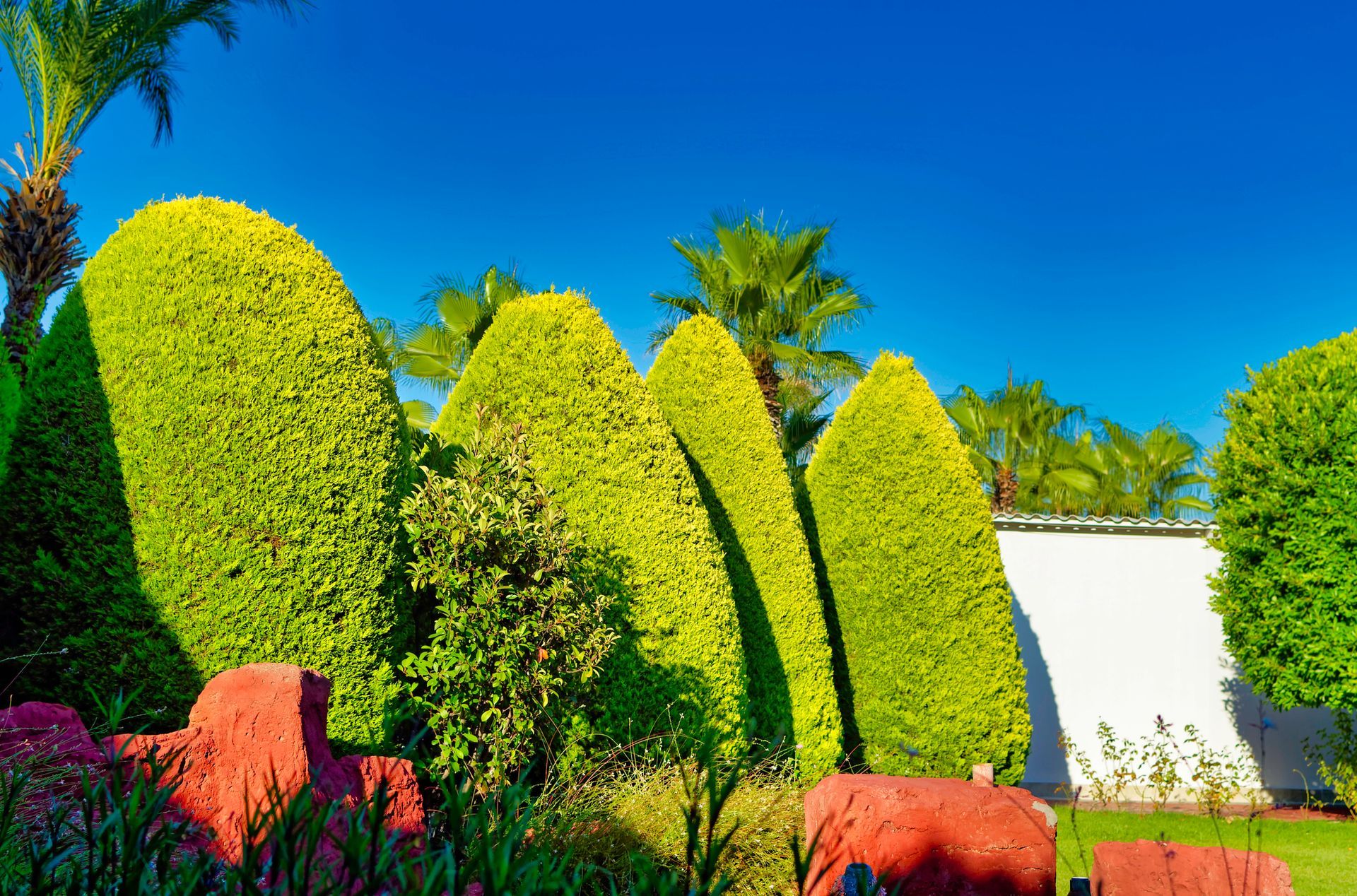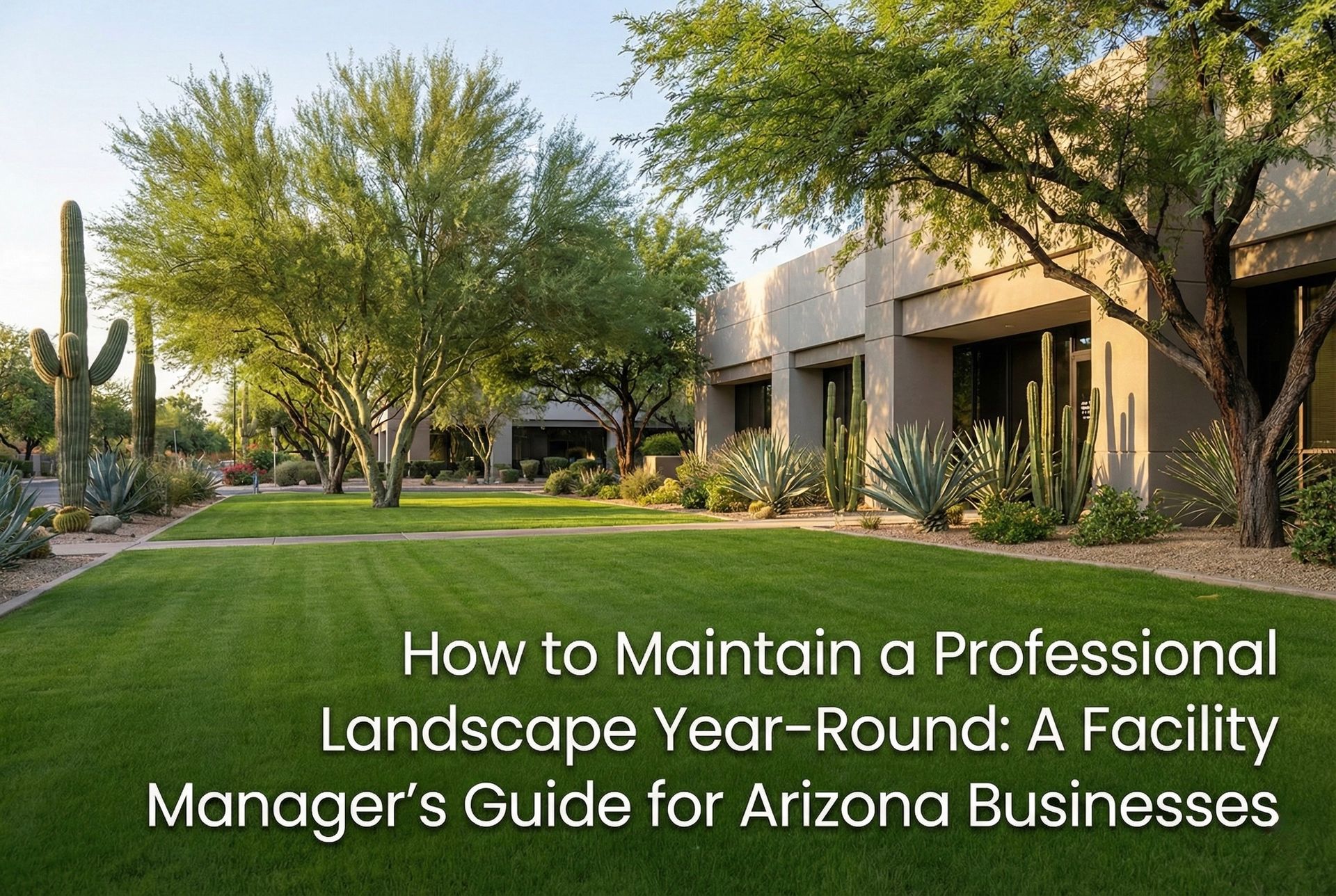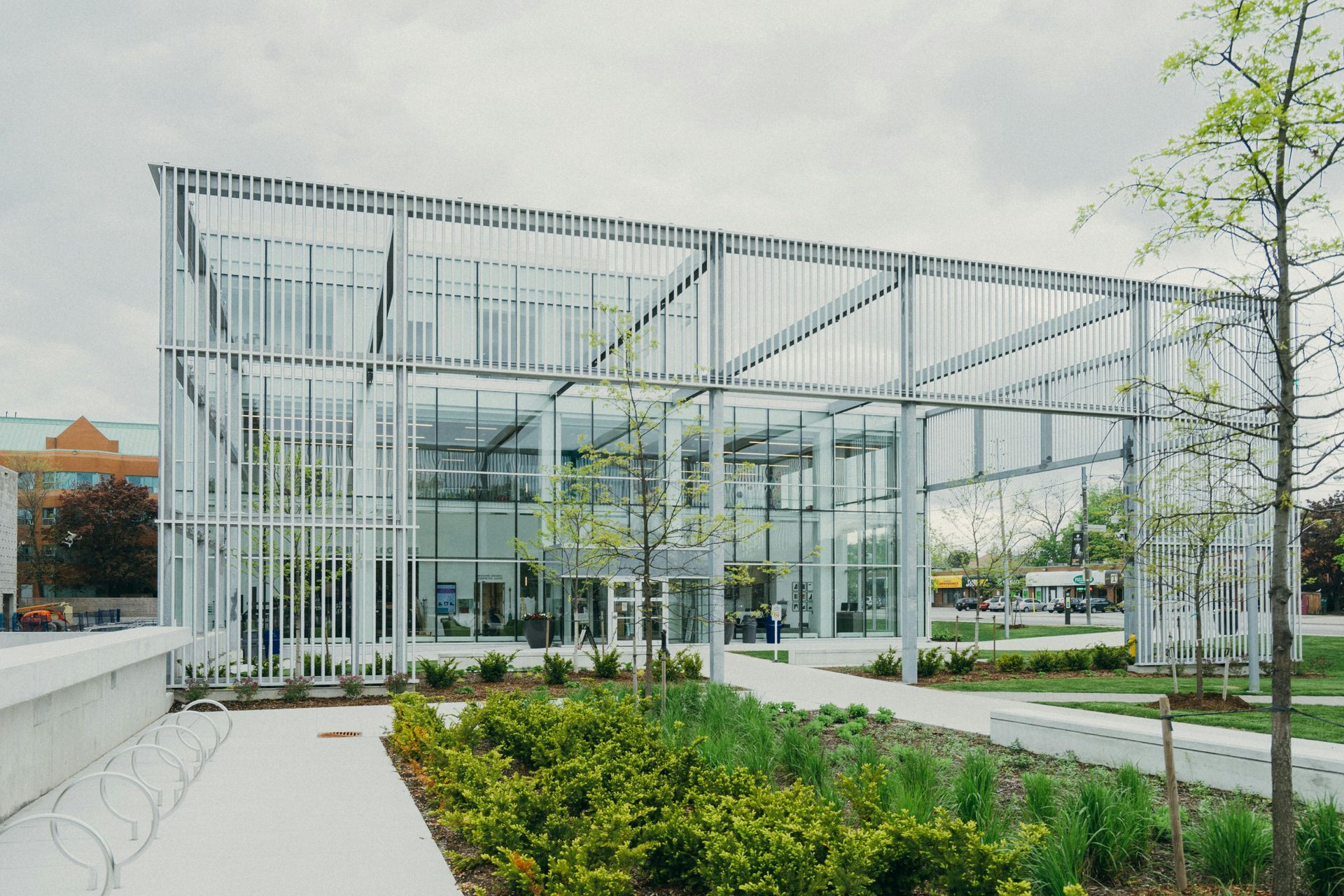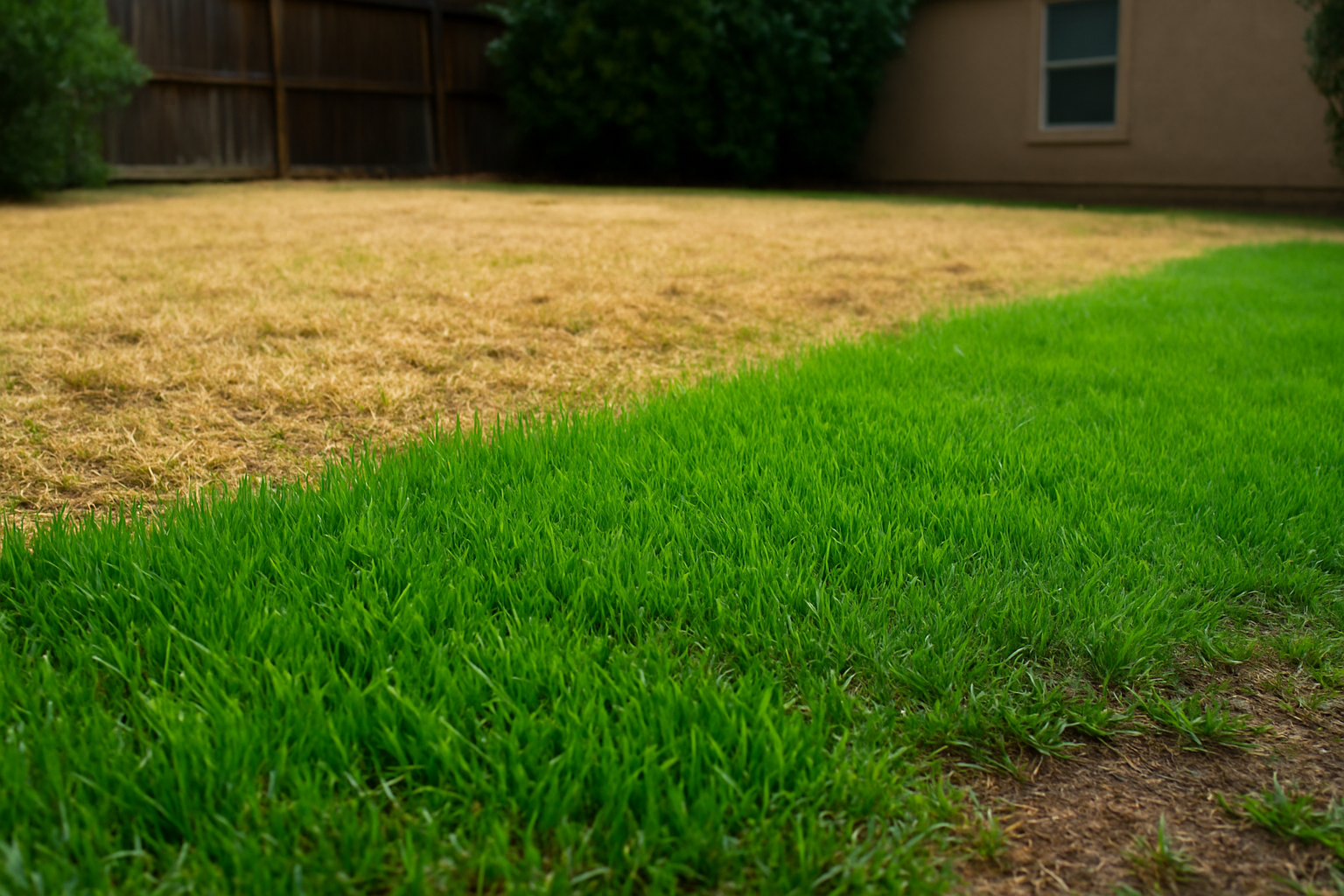
Fertilization is one of the most important steps in maintaining a healthy, green lawn in Arizona’s extreme climate. With scorching summers and dry winters, feeding your lawn at the right time and with the right nutrients ensures strong root development, resistance to stress, and year-round growth.
Many homeowners struggle with over-fertilizing in the summer, causing burnt grass, or under-fertilizing in the winter, leading to weak growth in spring. By following a seasonal fertilization plan, you can provide your grass with essential nutrients while avoiding common mistakes. If your lawn has trouble retaining nutrients, improving soil health can enhance fertilization effectiveness.
Why Fertilization Matters for Arizona Lawns
Grass requires three primary nutrients:
- Nitrogen (N) – Promotes lush, green growth.
- Phosphorus (P) – Strengthens root development.
- Potassium (K) – Improves drought resistance and overall resilience.
Arizona’s soil is often nutrient-deficient, making fertilization essential for maintaining a healthy lawn. However, applying too much nitrogen at the wrong time can cause excessive growth, leading to weaker roots that struggle in hot and dry conditions. If you’re unsure about your soil’s nutrient levels, a soil test can help determine the right fertilizer mix.
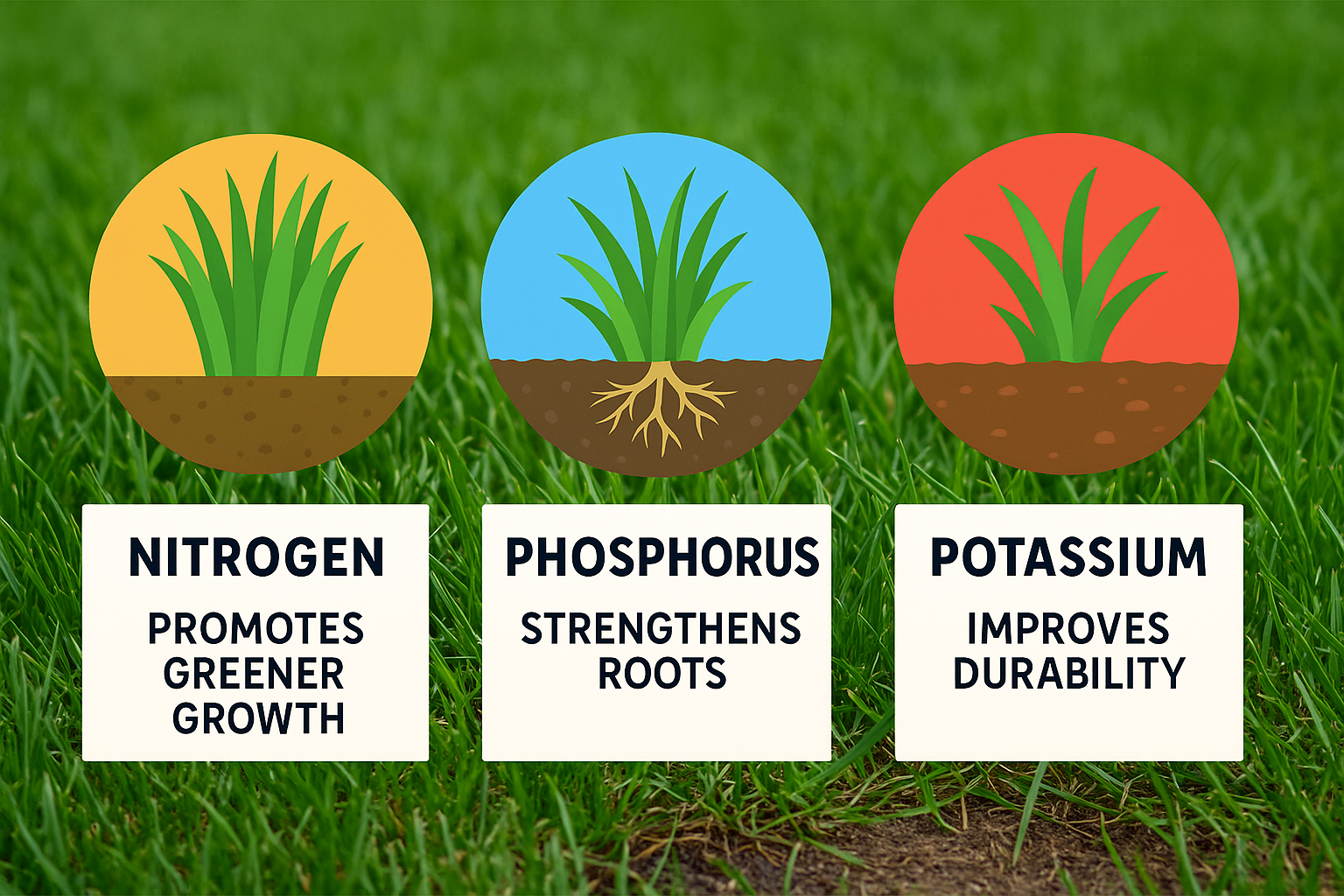
Spring Fertilization: Encouraging New Growth
Apply Fertilizer as Grass Exits Dormancy
As temperatures rise in March and April, warm-season grasses like Bermudagrass and Zoysiagrass begin coming out of dormancy. This is the best time to fertilize, providing nutrients that fuel healthy growth and prepare the lawn for summer heat.
A balanced fertilizer with higher nitrogen content (e.g., 16-4-8 NPK) encourages strong leaf and root development. However, avoid over-applying phosphorus unless reseeding, as too much can cause excessive thatch buildup.

Aerate and Water After Fertilization
Aerating the lawn in early spring allows nutrients to penetrate the soil more effectively. Follow up with deep watering to help distribute the fertilizer evenly through the root zone. If your soil is compacted or struggling to retain nutrients, soil improvement techniques can enhance fertilization success.
Summer Fertilization: Maintaining Strength Without Overfeeding
How to Water in Fall
In June, July, and August, high temperatures can stress lawns, making fertilization tricky. Applying too much nitrogen in summer can cause rapid growth, forcing the grass to consume more water and become susceptible to drought and disease.
Instead, opt for a slow-release nitrogen fertilizer to maintain lawn health without excessive top growth. Organic fertilizers like compost or manure also work well, providing nutrients gradually without the risk of burning grass.
Watering After Fertilization is Key
Fertilizer needs to be properly absorbed into the soil to be effective. Light watering after application helps nutrients reach the roots while preventing fertilizer runoff. If you’re unsure about how much to water after fertilizing, smart irrigation strategies can help optimize watering efficiency.
Fall Fertilization: Preparing for Winter Dormancy
Strengthen Roots Before Dormancy
September and October mark the transition from hot summer conditions to cooler fall temperatures. This is the ideal time to prepare your lawn for winter dormancy by applying a fertilizer high in potassium.
Potassium helps strengthen roots, making grass more resilient to cold temperatures and reducing winter stress. A fertilizer ratio of 10-5-20 (higher potassium content) is best during this period.

Overseeding? Apply Phosphorus-Rich Fertilizer
For homeowners overseeding with ryegrass in the fall, using a phosphorus-heavy fertilizer (e.g., 10-20-10 NPK) helps establish strong root growth in the new grass. This ensures a green winter lawn that transitions smoothly back to warm-season grass in spring. If you’re unsure how to overseed properly, our overseeding guide explains how to get the best results.
Winter Fertilization: Minimal but Necessary
Reduce Nitrogen, Focus on Root Health
In December, January, and February, warm-season grasses enter full dormancy and require little to no fertilizer. However, if you overseeded with ryegrass, applying a light, balanced fertilizer every 6-8 weeks helps maintain winter color.
Avoid high-nitrogen fertilizers in winter, as excess nitrogen can lead to weak, leggy growth that struggles in cold temperatures. A 5-10-10 NPK fertilizer is a better choice to support root strength without encouraging excessive top growth.
Common Fertilization Mistakes to Avoid
- Over-Fertilizing in Summer – Causes excessive growth, weak roots, and makes lawns more prone to disease.
- Skipping Fall Fertilization – Leads to weak grass entering dormancy, making it harder to recover in spring.
- Using the Wrong Fertilizer Ratio – Too much nitrogen at the wrong time can burn the lawn or cause uneven growth.
- Not Watering Properly After Application – Can wash away nutrients before they are absorbed by the roots.
Keeping Your Arizona Lawn Healthy with Proper Fertilization
By following seasonal fertilization schedules and applying the right nutrients at the right time, you can ensure your lawn stays healthy and resilient all year long. Proper fertilization combined with deep watering, aeration, and overseeding techniques makes it easier to maintain a thriving lawn, even in Arizona’s harsh climate.
If your lawn has trouble retaining nutrients, improving soil health can enhance fertilization effectiveness.




